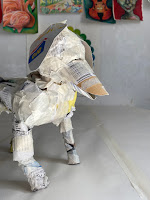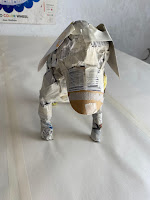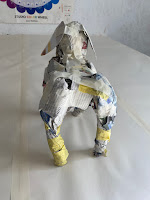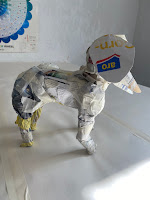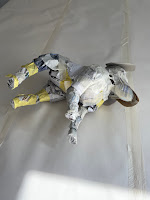My adult class created these gorgeous expressive flower bouquets inspired by the painter Annie O'Brien Gonzalez. Find her work here.
We considered analogous and complementary color schemes; contrast using black/white and pure colors/tints; variety of shape, line, pattern; and composition and movement.
To create patterns, texture and interest we used plastic stencils from Marabu in a variety of shapes (bricks, dots, triangles, florals and geometric shapes). Bubble wrap and corrugated cardboard was used to press additional patterns.
As an Amazon Associate I earn from qualifying purchases that may be linked in this blog.



































